Grow cucumbers indoors from seed and say goodbye to bland, store-bought cucumbers! Imagine biting into a crisp, juicy cucumber you nurtured from a tiny seed, right in the comfort of your own home. Sounds amazing, right? For centuries, cultivating cucumbers has been a cherished practice, dating back to ancient civilizations who valued them for their refreshing taste and medicinal properties. Now, you don’t need acres of land or a sprawling garden to enjoy this delicious treat.
This DIY guide is your passport to a thriving indoor cucumber patch. Whether you’re a seasoned gardener or a complete beginner, I’m here to show you how easy and rewarding it can be to grow cucumbers indoors from seed. Many people struggle with outdoor pests, unpredictable weather, or simply lack the space for a traditional garden. That’s where this hack comes in! I’ll walk you through every step, from selecting the right seeds and containers to providing the perfect lighting and watering schedule. Get ready to impress your friends and family with your homegrown cucumbers – they’ll be begging for your secret!
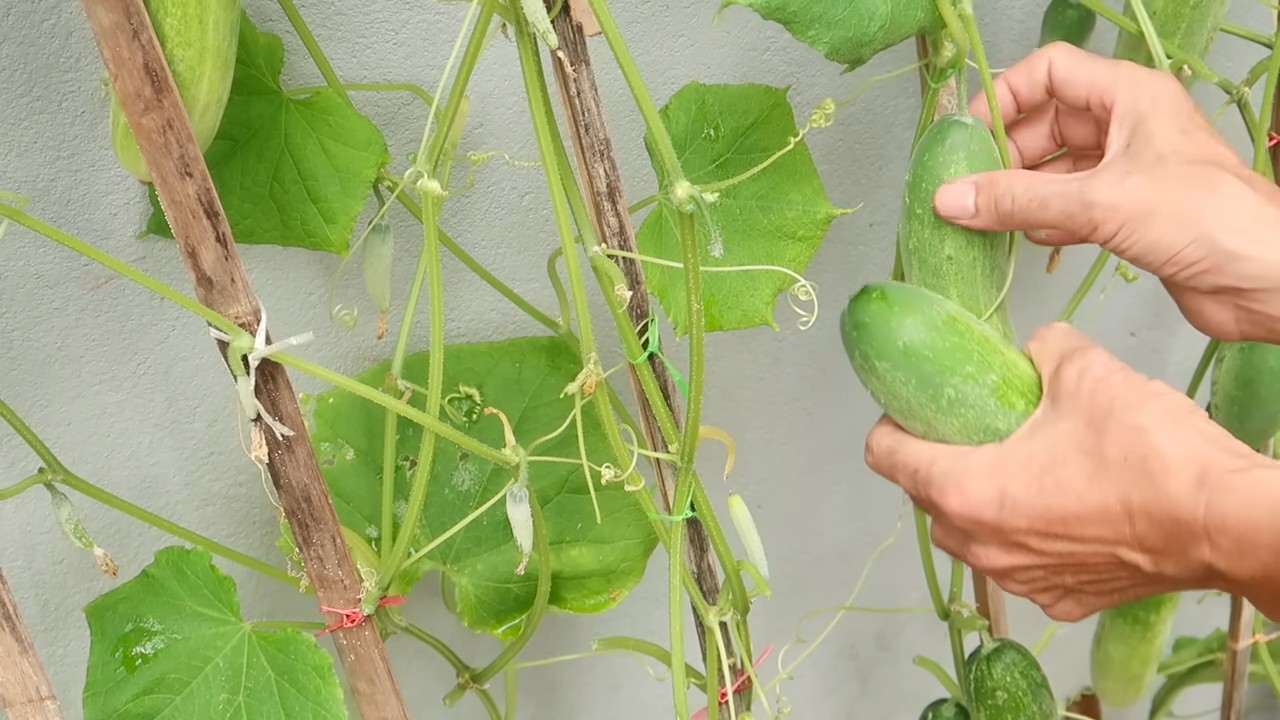
Growing Cucumbers Indoors: A Seed-to-Harvest Guide
Hey there, fellow gardening enthusiasts! Ever dreamt of enjoying fresh, crisp cucumbers even when the weather outside is frightful? Well, dream no more! I’m going to walk you through the process of growing cucumbers indoors, from tiny seed to delicious harvest. It’s easier than you think, and the reward is oh-so-satisfying.
Choosing the Right Cucumber Variety
Not all cucumbers are created equal, especially when it comes to indoor growing. You’ll want to select varieties that are compact, self-pollinating (parthenocarpic), and disease-resistant. Here are a few of my favorites:
* Spacemaster: As the name suggests, this variety is perfect for smaller spaces. It produces short, dark green cucumbers.
* Bush Champion: Another compact option, Bush Champion yields a good number of medium-sized cucumbers.
* Little Leaf: This variety is known for its small leaves, which allows for better air circulation and reduces the risk of fungal diseases.
* Diva: A popular choice for its delicious, burpless cucumbers and disease resistance.
Materials You’ll Need
Before we dive in, let’s gather our supplies. Having everything on hand will make the process smooth and enjoyable.
* Cucumber seeds: Choose your desired variety from the list above or explore other parthenocarpic options.
* Seed starting trays or small pots: These will be used to germinate the seeds.
* Seed starting mix: A light, well-draining mix is essential for healthy seedling development.
* Larger pots (at least 5 gallons): These will be the final homes for your cucumber plants.
* Potting mix: A good quality potting mix that retains moisture but also drains well.
* Grow lights: Cucumbers need plenty of light, especially indoors. LED grow lights are energy-efficient and effective.
* Fertilizer: A balanced liquid fertilizer formulated for vegetables.
* Trellis or support system: Cucumbers are vining plants and need something to climb on.
* Watering can or spray bottle: For gentle watering.
* Small fan (optional): To improve air circulation and prevent fungal diseases.
* Thermometer: To monitor the temperature around your plants.
Starting Your Cucumber Seeds
This is where the magic begins! Getting your seeds off to a good start is crucial for a successful harvest.
1. Prepare your seed starting trays or pots: Fill them with seed starting mix, leaving about half an inch of space at the top.
2. Sow the seeds: Make a small indentation (about ½ inch deep) in the center of each pot or cell. Place one or two cucumber seeds in each indentation and cover them gently with seed starting mix.
3. Water gently: Use a spray bottle or watering can with a gentle nozzle to moisten the soil. Avoid overwatering, as this can lead to rot.
4. Provide warmth: Cucumber seeds germinate best in warm temperatures (around 70-80°F). You can use a heat mat to provide consistent warmth.
5. Maintain moisture: Keep the soil consistently moist, but not soggy. You can cover the trays or pots with a plastic dome or plastic wrap to help retain moisture.
6. Wait for germination: Cucumber seeds typically germinate within 5-10 days. Once the seedlings emerge, remove the plastic cover and place them under grow lights.
Caring for Your Cucumber Seedlings
Once your seedlings have sprouted, it’s time to provide them with the care they need to thrive.
1. Provide adequate light: Place the seedlings under grow lights for 14-16 hours per day. Position the lights a few inches above the seedlings and adjust as they grow.
2. Water regularly: Water the seedlings when the top inch of soil feels dry to the touch. Avoid overwatering, as this can lead to root rot.
3. Fertilize gently: Once the seedlings have developed their first true leaves (the leaves that appear after the initial seed leaves), start fertilizing them with a diluted liquid fertilizer. Follow the instructions on the fertilizer label.
4. Thin the seedlings: If you planted two seeds per pot or cell, thin them to one seedling once they have developed a few true leaves. Choose the strongest, healthiest seedling and snip off the other at the soil line.
5. Provide air circulation: Good air circulation is essential for preventing fungal diseases. You can use a small fan to gently circulate the air around the seedlings.
Transplanting Your Cucumber Seedlings
Once your seedlings have grown a few inches tall and have developed a strong root system, it’s time to transplant them into their final pots.
1. Prepare your larger pots: Fill the larger pots (at least 5 gallons) with potting mix, leaving a few inches of space at the top.
2. Carefully remove the seedlings: Gently remove the seedlings from their seed starting trays or pots. Be careful not to damage the roots.
3. Plant the seedlings: Make a hole in the center of each pot that is large enough to accommodate the root ball of the seedling. Place the seedling in the hole and gently backfill with potting mix.
4. Water thoroughly: Water the transplanted seedlings thoroughly to help settle the soil.
5. Provide support: Install a trellis or other support system for the cucumber plants to climb on.
Caring for Your Mature Cucumber Plants
Now that your cucumber plants are in their final pots, it’s time to provide them with the ongoing care they need to produce a bountiful harvest.
1. Provide adequate light: Continue to provide your cucumber plants with 14-16 hours of light per day. Adjust the grow lights as needed to ensure that the plants are receiving enough light.
2. Water regularly: Water your cucumber plants when the top inch of soil feels dry to the touch. Cucumbers need consistent moisture, especially when they are fruiting.
3. Fertilize regularly: Fertilize your cucumber plants every 2-3 weeks with a balanced liquid fertilizer. Follow the instructions on the fertilizer label.
4. Pollination (if necessary): While the varieties I recommended are self-pollinating, sometimes they need a little help. You can hand-pollinate your cucumber flowers by using a small paintbrush to transfer pollen from the male flowers to the female flowers. Male flowers have a long, thin stem, while female flowers have a small cucumber-like structure behind the flower.
5. Prune your plants: Pruning can help improve air circulation and encourage fruit production. Remove any yellowing or dead leaves, as well as any suckers (small shoots that grow from the base of the plant).
6. Monitor for pests and diseases: Keep an eye out for common cucumber pests, such as aphids, spider mites, and whiteflies. You can control these pests with insecticidal soap or neem oil. Also, watch for signs of fungal diseases, such as powdery mildew. Improve air circulation and avoid overwatering to prevent fungal diseases.
Harvesting Your Cucumbers
The moment you’ve been waiting for! Harvesting your cucumbers at the right time is crucial for optimal flavor and texture.
1. Harvest when they are the right size: The size of your cucumbers will depend on the variety you are growing. Check the seed packet or plant tag for specific harvesting instructions.
2. Harvest regularly: Harvest your cucumbers regularly to encourage continued fruit production.
3. Use a sharp knife or scissors: Cut the cucumbers from the vine using a sharp knife or scissors. Be careful not to damage the plant.
Troubleshooting Common Problems
Even with the best care, you may encounter some challenges along the way. Here are a few common problems and how to address them:
* Yellowing leaves: This can be caused by overwatering, underwatering, nutrient deficiencies, or pests. Adjust your watering schedule, fertilize your plants, and inspect them for pests.
* Lack of fruit: This can be caused by insufficient light, poor pollination, or nutrient deficiencies. Provide adequate light, hand-pollinate your flowers if necessary, and fertilize your plants.
* Powdery mildew: This fungal disease appears as a white, powdery coating on the leaves. Improve air circulation, avoid overwatering, and treat with a fungicide if necessary.
* Pests: Common cucumber pests include aphids, spider mites, and whiteflies. Control these pests with insecticidal soap or neem oil.
Growing cucumbers indoors is a rewarding experience that allows you to enjoy fresh, delicious cucumbers year-round. With a little care and attention, you can have a thriving indoor cucumber garden. Happy gardening!
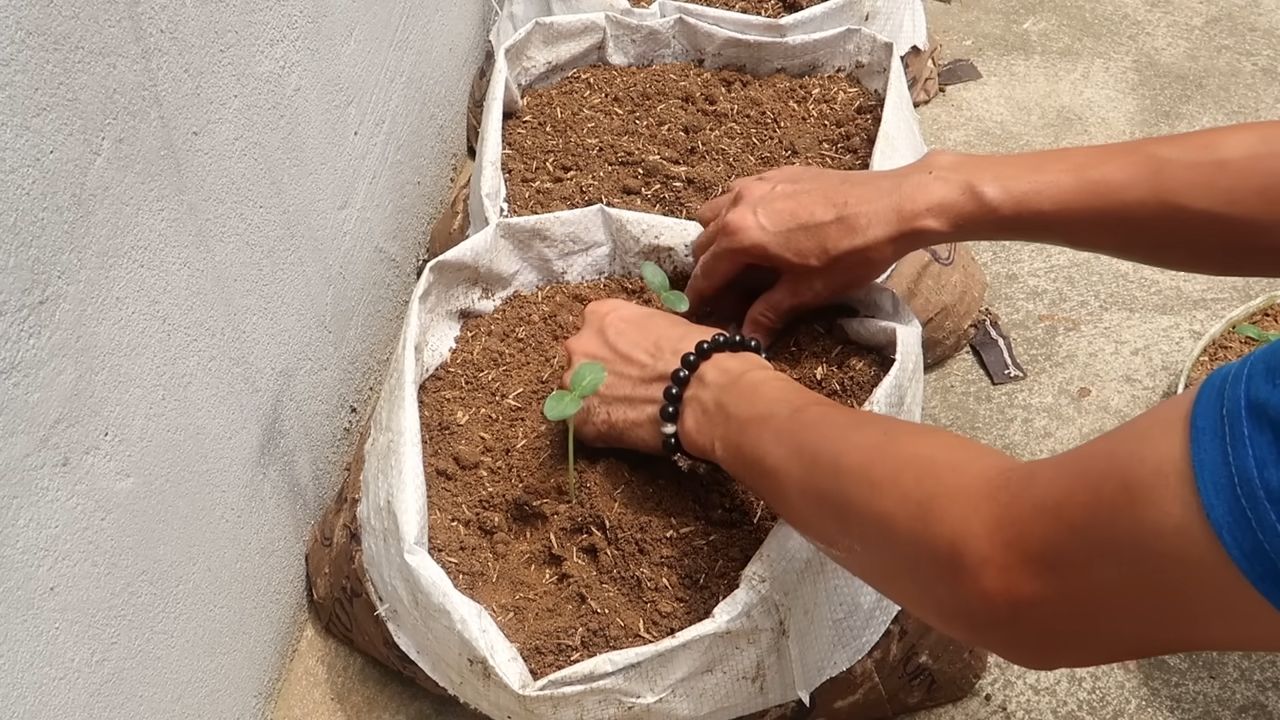
Conclusion
So, there you have it! Growing cucumbers indoors from seed might seem daunting at first, but with a little patience and the right approach, you can enjoy fresh, crisp cucumbers even when the weather outside is frightful. This DIY trick isn’t just about saving money; it’s about connecting with nature, understanding the growing process, and experiencing the unparalleled satisfaction of harvesting something you nurtured from a tiny seed.
Why is this a must-try? Because it puts you in control. You choose the variety, you control the environment, and you avoid the potential chemicals and pesticides often used in commercial farming. Plus, imagine the bragging rights when you serve a salad featuring cucumbers you grew yourself in the middle of winter!
Don’t be afraid to experiment! Try different cucumber varieties suited for indoor growing, such as Spacemaster, Bush Champion, or Salad Bush. Play around with different lighting setups to see what works best for your space. You can even try companion planting, adding herbs like basil or dill to your cucumber pots to deter pests and enhance flavor. Consider using self-watering containers to simplify the watering process, especially if you’re prone to forgetting.
Remember, growing cucumbers indoors from seed is a journey, not a destination. There will be successes and setbacks, but each experience will teach you something new. The key is to be observant, adaptable, and persistent.
We wholeheartedly encourage you to give this DIY trick a try. It’s a rewarding experience that will not only provide you with delicious cucumbers but also deepen your appreciation for the natural world. And most importantly, we want to hear about your experience! Share your photos, tips, and challenges in the comments below. Let’s create a community of indoor cucumber growers and learn from each other. Tell us what worked for you, what didn’t, and any creative solutions you came up with. Your insights could be invaluable to someone else just starting out. Let’s cultivate a thriving garden, one cucumber at a time! Embrace the challenge and discover the joy of growing cucumbers indoors from seed.
Frequently Asked Questions (FAQs)
1. What are the best cucumber varieties to grow indoors from seed?
Choosing the right variety is crucial for indoor success. Look for bush or compact varieties specifically bred for container gardening. Some excellent options include:
* **Spacemaster:** A popular choice known for its compact size and high yield.
* **Bush Champion:** Another compact variety that produces flavorful cucumbers.
* **Salad Bush:** A prolific producer of small, crisp cucumbers perfect for salads.
* **Patio Snacker:** Ideal for small spaces, producing snack-sized cucumbers.
* **Little Leaf:** A unique variety with smaller leaves, making it well-suited for indoor growing.
Always check the seed packet for information on plant size and suitability for container gardening.
2. What kind of lighting do cucumbers need when grown indoors?
Cucumbers require at least 6-8 hours of direct sunlight per day. If you don’t have a sunny window, you’ll need to supplement with artificial lighting. LED grow lights are a great option because they are energy-efficient and provide the full spectrum of light that plants need. Fluorescent grow lights can also be used, but they are less energy-efficient. Position the lights a few inches above the plants and adjust as they grow. A timer can automate the on/off cycle, ensuring consistent light exposure.
3. What type of soil and container should I use for growing cucumbers indoors?
Use a well-draining potting mix specifically formulated for vegetables. Avoid using garden soil, as it can become compacted in containers and hinder drainage. A good potting mix will retain moisture while allowing excess water to drain away.
Choose a container that is at least 5 gallons in size. Cucumbers have extensive root systems, so a larger container will provide ample space for growth. Make sure the container has drainage holes to prevent waterlogging. Fabric pots are also a good option, as they allow for better aeration of the roots.
4. How often should I water my indoor cucumber plants?
Water your cucumber plants regularly, keeping the soil consistently moist but not waterlogged. Check the soil moisture by sticking your finger about an inch into the soil. If it feels dry, it’s time to water. Water deeply, allowing the water to drain out of the drainage holes. Avoid overhead watering, as this can lead to fungal diseases. Consider using a self-watering container or a watering can with a long spout to water directly at the base of the plant.
5. How do I pollinate my indoor cucumber plants?
Cucumbers are typically pollinated by bees, but since you’re growing them indoors, you’ll need to hand-pollinate them. Identify the male and female flowers. Male flowers have a long, thin stem, while female flowers have a small cucumber-like structure at the base. Use a small paintbrush or cotton swab to collect pollen from the male flower and transfer it to the stigma of the female flower. Do this in the morning, when the flowers are open. You may need to repeat the process for several days to ensure successful pollination. Alternatively, you can use a small electric toothbrush to vibrate the pollen from the male flower onto the female flower.
6. What are some common pests and diseases that affect indoor cucumber plants, and how can I prevent them?
Common pests include aphids, spider mites, and whiteflies. Regularly inspect your plants for signs of infestation. You can control these pests by spraying the plants with insecticidal soap or neem oil.
Common diseases include powdery mildew and fungal leaf spots. To prevent these diseases, ensure good air circulation around the plants and avoid overhead watering. If you notice signs of disease, remove the affected leaves and spray the plants with a fungicide.
7. How do I fertilize my indoor cucumber plants?
Cucumbers are heavy feeders, so they need regular fertilization. Use a balanced fertilizer specifically formulated for vegetables. Follow the instructions on the fertilizer label. You can also use organic fertilizers, such as compost tea or fish emulsion. Fertilize your plants every 2-3 weeks during the growing season.
8. How long does it take to grow cucumbers indoors from seed?
It typically takes 50-70 days from seed to harvest, depending on the variety and growing conditions. Be patient and provide your plants with the care they need, and you’ll be rewarded with delicious, homegrown cucumbers.
9. Can I grow cucumbers indoors year-round?
Yes, you can grow cucumbers indoors year-round, provided you have adequate lighting and temperature control. Maintain a consistent temperature of 70-80°F during the day and 60-70°F at night.
10. What if my cucumber plant is producing flowers but no fruit?
This is usually due to a lack of pollination. Make sure you are hand-pollinating your plants regularly. Also, ensure that your plants are receiving adequate light and nutrients. Stressful conditions can also prevent fruit production.


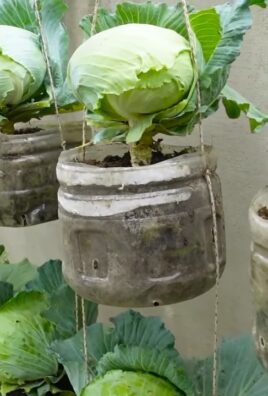
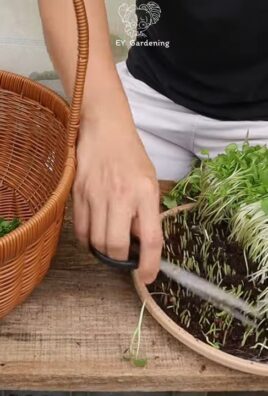
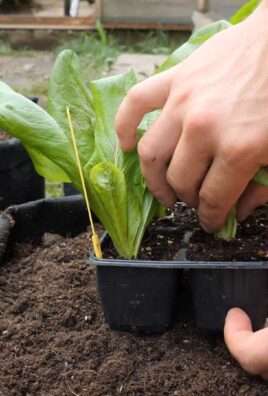
Leave a Comment